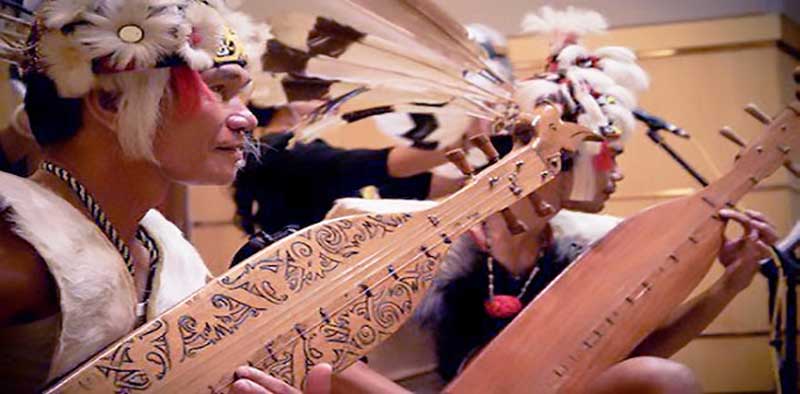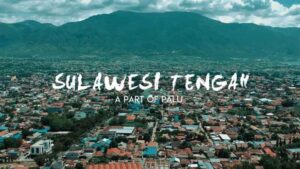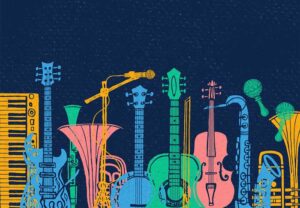
[ad_1]
East Kalimantan or commonly abbreviated as East Kalimantan is one of the provinces in Indonesia which is in the easternmost part of the island of Borneo. Prior to the expansion of North Kalimantan, East Kalimantan was the largest province after Papua. Regarding culture, East Kalimantan has various ethnic groups, each of which has different culture and customs. Therefore, East Kalimantan is an area that is very rich in cultural diversity. Well, one of the cultural varieties that this area has is the traditional musical instruments of East Kalimantan.
Also Read: Traditional Musical Instruments of South Kalimantan
10 Traditional Musical Instruments of East Kalimantan
Curious what types and names of each musical instrument are still typical in that area? Let’s look at the following review.
1. Crazy

This traditional musical instrument is played by being hit using bare hands and special techniques to produce the right rhythmic pattern. Like drums in general. Gemer musical instruments are made of wooden sticks with holes perforated on each side and covered with animal skin.
Although Indonesians often see all jam musical instruments as drums, there are 4 types of gemer musical instruments which can be distinguished according to their size, namely prahi, gimar, tuuking tuat and pampong.
2. Klentang

This traditional musical instrument includes the silofan type which is like a xylophone instrument. The sludding instrument has 8 wooden blades placed on a wooden rack. On the right and left of this musical instrument is decorated with a pattern of the head of a hornbill as a symbol of a sacred animal by the Modang Dayak tribe. The sluding instrument is played during traditional ceremonies.
This Klentangan has 6 small gongs which are played by being hit on a prominent part. This gong-gong musical instrument is arranged in a place like a rack that is in accordance with the shape and size of the small gong and the position of the sound.
3. Until/Sape

This traditional musical instrument is a musical instrument that is played by taking it and a kind of lut which has 3 strings. This Sampek musical instrument is made of wood. Generally, this part of the musical instrument is decorated with an ornament on the head of a hornbill which is considered sacred by the Dayak Kenyah people.
This Sampek musical instrument is played during traditional ceremonies to accompany dances, for example the Hudoq dance which is performed at the start of the planting season, village cleaning ceremonies, and celebrating the harvest season. When accompanying the dance, the Sampek musical instrument is played in conjunction with several gongs.
4. Genikng

This traditional East Kalimantan musical instrument is played by being beaten using a separate stick of wood. Genikng musical instruments are made of metal or bronze with a striking center side in the form of a circle. This genikng is also known as a gong musical instrument in Java.
Genikng musical instruments are divided into 3 types which are distinguished according to their size, namely sukatn, dimples and pamole’. Genikng musical instruments are placed by hanging in a place made of wood.
5. Laughter

This traditional musical instrument is a large gong made of brass with a height of 20 cm, a diameter of 60 cm, and carved reliefs of dragon snakes and generally plain without decorations.
The gong musical instrument which has a small size is called the rickshaw with a height of 8 cm, a diameter of 40 cm. And the roles of the two gongs are different in terms of layout, sound and timing.
Until now, the tawak instrument is still the most valuable item. The tawak instrument is an object of high value, but it is not sacred.
The role of this tawak instrument is as a means of communication in everyday life, especially at the event of community deaths and fire disasters, and to encourage village communities to work together.
6. Pass

This traditional East Kalimantan musical instrument has a shape like a tube sitar and belongs to the idiocordophone family of instruments. The lulung musical instrument is made from a bamboo tube and is equipped with 6 strings taken from the shavings of the bamboo tube.
Generally, the lulung musical instrument is played by several Dayak Kenyah women. To play this instrument is to be taken.
7. Rickshaw
This traditional musical instrument is a small gong that has never been beaten and has never been used as a medium of communication. However, this rickshaw musical instrument plays a role in symbol communication, which does not have to sound it. Angkong can give the impression of being haunted and respectable for those who wear it and or just look at it.
The excess of the role of the rickshaw musical instrument as a blood vessel for sacrificial pigs or chickens which is used specifically for men who return home after headhunting. Today the ceremony is still being carried out and is held for all old village men or small children.
8. Debt Heart

This traditional musical instrument of the Kenyah tribe is made from wooden sticks that are strung together and tied with rattan rope. Each neatly arranged wooden slab has a certain sound. For Kenyah residents, this jatung debt instrument has other names, namely: jatung debt, gang galeng / ting galing (depending on the Kenyah’s accent).
But it is distinguished from the place of this instrument. The game is played in a horizontal position with the players standing, while the gang galing / ting galing is played in a vertical position with the players sitting.
9. Heart of Adau
These traditional musical instruments include membranophone instruments from the Dayak Kenyah tribe who live in East Kalimantan. Jatung adau has many nicknames in each region, namely Tawung from the Dayak Modang Tribe, Tubung from the Dayak Kebahan Tribe, and Prahil from the Dayak Tunjung Tribe.
This musical instrument is made of adau wood and is similar to a drum which has a diameter of 45 cm, around 25 cm in the tail and a total length of about 250 cm. Meanwhile, the membrane is made of ox skin or antelope skin which is bound using rattan and a ring binder or what is called as an obscenity.
Generally, the Jatung Adau musical instrument is played to accompany the Belian, Jimamnugroho, and Hudoq dances. Besides that, it serves as a communication tool for the Kenyah people.
10. Uding

This traditional Kalimantan musical instrument has a diameter of only 2 to 3 cm, with a length of up to 20 cm and at the end there is a cavity filled with wood seeds.
Uding is played by being hit. Its use is a little unique, in which the player holds his instrument with two fingers and then opens his mouth as if to say “a”. Position it stretched across the mouth while tapping the tip with the fingers of the other hand until the blade vibrates and makes a sound.
Closing
Such is the info regarding the traditional musical instruments of East Kalimantan. Hopefully what you read is useful to increase knowledge in the field of music art. And don’t hesitate to provide feedback, criticism or opinions for the development of this blog.

